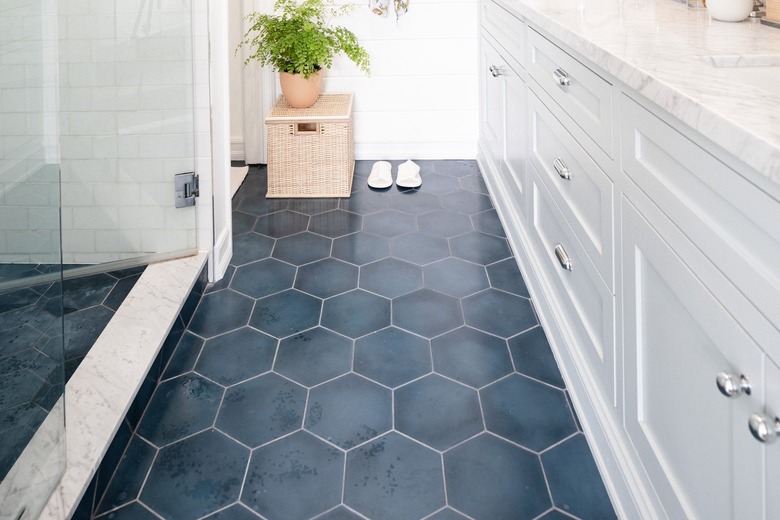Ideas For Transitioning With Tile From One Room To Another
The flow of a home is greatly influenced by the layout of the flooring. Successful floor transitions from one room to the next are essential to creating a smooth, seamless floor design. Between two tiled rooms, transitions are especially important, not only for design, but also for ensuring that the tiles are protected from damage. The good news is, with the variety of transitions available, you do not have to sacrifice style for function.
Using Transition Strips
One common and inexpensive option for transitioning between tiled rooms is a transition strip. A transition strip is a thin section of wood or vinyl that fits between two sections of flooring to create a threshold. Though there are several types of transition strips designed to suit a variety of flooring combinations, most strips include a hook that fits beneath the floor and a lip that curves over the floor to create a clean edge.
Transition strips tend to be more functional than stylish; they are available in a limited number of styles and colors, typically catering to wood flooring products and styles. They are convenient and inexpensive, but they may interrupt the visual flow between tiled floors.
Using Color Blocking
If the tile in each room is different, create a visual transition by employing a color blocking technique. To create a basic color block, lay a row of relatively small, horizontal tiles in a distinct color at the joint between the two rooms. One approach is to select a transitional color: If the tiles in each room are different shades of the same color, select a transition tile that is a hue between each tile color for a seamless transition from room to room.
Another option is to select complementary colors: If your tiles are either neutral colors or matching colors, select a transitional tile in a color that complements the room tiles. For example, an olive green tile transitions between two cream-colored tile rooms, while a beige tile offers transition between a cream-tiled room and a mocha-tiled room.
If you want a more contemporary twist, select a contrasting transitional tile. For example, glass amethyst or emerald tiles are a striking option between neutral colored tiles, while red tiles are a bright option between green-tiled rooms.
Using Tile Patterns
Use a tile pattern to signify a transition from one room to another. Tile patterns are especially effective if the tiles in each room are matching or similar in color and style. One option is to create a threshold using leftover pieces of matching tile. Cut small triangles from larger sections of matching tile and lay the triangles in an alternating pattern so that they create a simple threshold between spaces.
For a more artistic layout, smash the extra tiles into small pieces and lay them in a simple mosaic. Fill the spaces with a darker grout to create more visual contrast. If the tiles in each room do not match, choose a neutral color tile in gray, cream, or tan to create a simple tile pattern.
Tip
Small 2-inch square tiles stacked in two rows are a simple option for transitioning between rooms.
